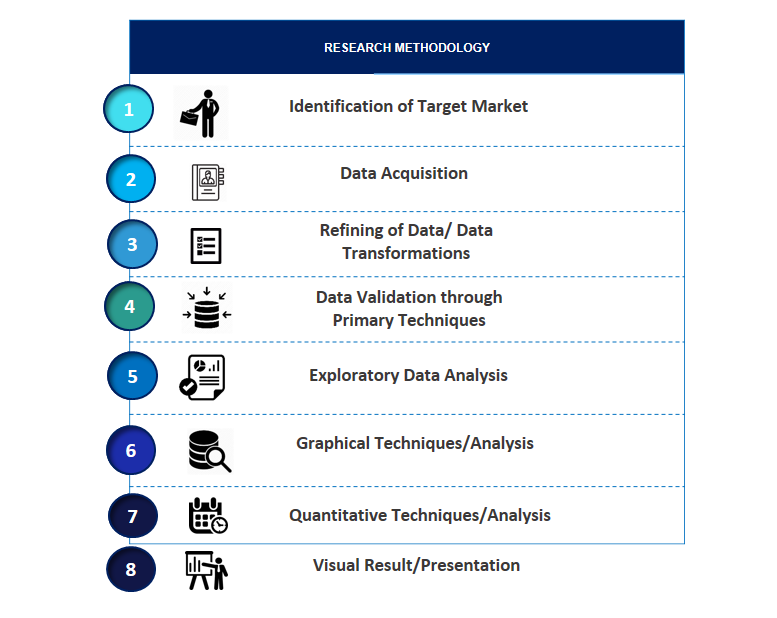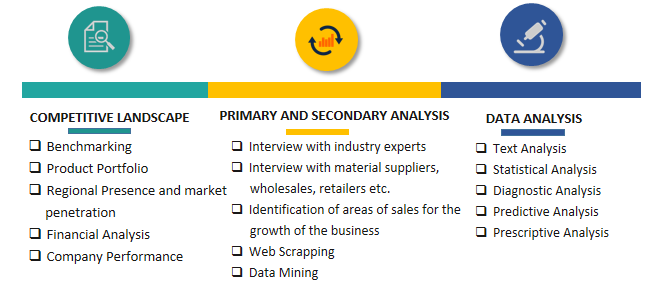Brazil Agricultural Biologicals Market Introduction and Overview
According to SPER Market Research, the Brazil Agricultural Biologicals Market is estimated to reach USD 1.85 billion by 2033 with a CAGR of 10.46%.
The report includes an in-depth analysis of the Brazil Agricultural Biologicals Market, including market size and trends, product mix, applications, and supplier analysis. Agricultural biologicals are a different class of farming agents originating from natural sources such as microbes, plant extracts, and beneficial insects. They play an important role in increasing agricultural productivity and protection, with a primary focus on delivering sustainable and environmentally friendly solutions. They increase agricultural productivity while leaving the soil and surrounding environment in good condition. They function by enriching the soil with critical nutrients, promoting plant growth, and protecting crops from pests and diseases without the need of chemicals. They serve as an alternative to typical chemical-based fertilisers and pesticides because they do not leave toxic residues on food, making the product safer to consume.
- In September 2022, Corteva Agriscience entered into an agreement to purchase Symborg, a biologicals-based company, as part of its plan to broaden its line of biological products. This action would assist Corteva Agriscience in realising its objective of dominating the agricultural biological market on a global scale.
- Andermatt Group AG announced in January 2022 that Andermatt Biocontrol AG and Andermatt Group AG will merge. As a result, all businesses will answer directly to Andermatt Group AG. This will streamline the organization's structure and improve management efficacy.
Market Opportunities and Challenges
Opportunities-
Growing shift towards sustainable agriculture and precision farming practices: The growing demand for sustainable agriculture is driving the expansion of Brazil's agricultural biologicals sector. According to the FAO, agricultural production must increase by 70% to meet the demands of the world's anticipated 9.1 billion people by 2050. Since 1988, the Nature Conservancy in Brazil has advocated for ethical production that is in line with biodiversity protection and social development. Sustainable techniques, such as efficient water and energy usage, are critical because agriculture is the greatest water user among economic sectors. The sector's shift to sustainable intensification, good agricultural practices, and socio-environmental certification boosts productivity while lowering environmental impact, making Brazilian agricultural products more competitive in the worldwide market.
Challenges-
Higher Initial Expenses: A major impediment to the agricultural biologicals market's expansion in Brazil is its high startup price. Due to their greater upfront costs in comparison to conventional chemical pesticides and fertilisers, farmers are reluctant to invest in these solutions because they frequently have limited financial resources. Despite the fact that agricultural biologicals can preserve crops sustainably and enhance soil health in the long run, the upfront costs might be demoralising. Their adoption and accessibility are restricted by this cost aspect, especially among small-scale farmers who are more susceptible to fluctuations in prices. As a result, Brazil's agricultural biologicals market is growing at a slower rate overall.
Market Competitive Landscape
The top five businesses have 7.19% of the fragmented Brazil Agricultural Biologicals Market. FMC Corporation, Novozymes, Rizobacter, Trade Corporation International, and Vittia Group are the leading companies in this market.
Scope of the Report:
| Report Metric | Details |
| Market size available for years | 2020-2033 |
| Base year considered | 2023 |
| Forecast period | 2024-2033 |
| Segments covered | By Function, By Crop Type, By Source, By Mode of Application
|
| Regions covered | Eastern Region, Western Region, Southern Region, Northern Region.
|
| Companies Covered | Andermatt Group AG4, Corteva Agriscience, FMC Corporation, Haifa Group, Novozymes, Rizobacter, Trade Corporation International, Valagro, Vittia Group.
|
COVID-19 Impact on Brazil Agricultural Biologicals Market
The market for agricultural biologicals has been impacted by the Covid-19 outbreak in both positive and negative ways. Positively, there is now a greater emphasis on food security as a result of the pandemic. This has led to the development of agricultural biologicals and sustainable agricultural methods. Change to Local and Sustainable Food Production: The demand for agricultural biologicals increased as a result of the disruption of global supply networks, which led to a change to local and sustainable food production systems. Negative aspects include: Disruptions in Global Supply Chains: The pandemic caused supply chain disruptions that had an impact on the distribution and availability of agricultural biological goods.
Key Target Audience:
- Agricultural Input Manufacturers
- Agribusiness Corporations
- Investment Firms and Venture Capitalists
- Government Agencies and Policy Makers
- Agricultural Cooperatives and Associations
- Research and Development Institutions
- Retailers and Distributors of Agricultural Products
- Environmental and Sustainability Organizations
- Technology Providers in Agriculture
- Consulting Firms and Advisors
Our in-depth analysis of the Brazil Agricultural Biologicals Market includes the following segments:
|
By Function:
|
Crop Protection
Crop Enhancement
|
|
By Crop Type:
|
Cereals & Grains
Oilseeds & Pulses
Fruits & Vegetables
|
|
By Source:
|
Microbials
Biochemicals
|
|
By Mode of Application:
|
Foliar Spray
Seed Treatment
Soil Treatment
Post-harvest
|
Key Topics Covered in the Report:
- Brazil Agricultural Biologicals Market Size (FY’2024-FY’2033)
- Overview of Brazil Agricultural Biologicals Market
- Segmentation of Brazil Agricultural Biologicals Market By Function (Crop Protection, Crop Enhancement)
- Segmentation of Brazil Agricultural Biologicals Market By Crop Type (Cereals & Grains, Oilseeds & Pulses, Fruits & Vegetables)
- Segmentation of Brazil Agricultural Biologicals Market By Source (Microbials, Biochemicals)
- Segmentation of Brazil Agricultural Biologicals Market By Mode of Application (Foliar Spray, Seed Treatment, Soil Treatment, Post-harvest)
- Statistical Snap of Brazil Agricultural Biologicals Market
- Expansion Analysis of Brazil Agricultural Biologicals Market
- Problems and Obstacles in Brazil Agricultural Biologicals Market
- Competitive Landscape in the Brazil Agricultural Biologicals Market
- Impact of COVID-19 and Demonetization on Brazil Agricultural Biologicals Market
- Details on Current Investment in Brazil Agricultural Biologicals Market
- Competitive Analysis of Brazil Agricultural Biologicals Market
- Prominent Players in the Brazil Agricultural Biologicals Market
- SWOT Analysis of Brazil Agricultural Biologicals Market
- Brazil Agricultural Biologicals Market Future Outlook and Projections (FY’2024-FY’2033)
- Recommendations from Analyst
1. Introduction
1.1. Scope of the report
1.2. Market segment analysis
2. Research Methodology
2.1. Research data source
2.1.1. Secondary Data
2.1.2. Primary Data
2.1.3. SPER’s internal database
2.1.4. Premium insight from KOL’s
2.2. Market size estimation
2.2.1. Top-down and Bottom-up approach
2.3. Data triangulation
3. Executive Summary
4. Market Dynamics
4.1. Driver, Restraint, Opportunity and Challenges analysis
4.1.1. Drivers
4.1.2. Restraints
4.1.3. Opportunities
4.1.4. Challenges
4.2. COVID-19 Impacts of the Brazil Agricultural Biologicals Market.
5. Market variable and outlook
5.1. SWOT Analysis
5.1.1. Strengths
5.1.2. Weaknesses
5.1.3. Opportunities
5.1.4. Threats
5.2. PESTEL Analysis
5.2.1. Political Landscape
5.2.2. Economic Landscape
5.2.3. Social Landscape
5.2.4. Technological Landscape
5.2.5. Environmental Landscape
5.2.6. Legal Landscape
5.3. PORTER’s Five Forces
5.3.1. Bargaining power of suppliers
5.3.2. Bargaining power of buyers
5.3.3. Threat of Substitute
5.3.4. Threat of new entrant
5.3.5. Competitive rivalry
5.4. Heat Map Analysis
6. Competitive Landscape
6.1. Brazil Agricultural Biologicals Market Manufacturing Base Distribution, Sales Area, Product Type
6.2. Mergers & Acquisitions, Partnerships, Product Launch, and Collaboration in Brazil Agricultural Biologicals Market
7. Brazil Agricultural Biologicals Market, By Function (USD Million) 2020-2033
7.1. Brazil Agricultural Biologicals Market Size, Share and Forecast, By Function, 2020-2026
7.2. Brazil Agricultural Biologicals Market Size, Share and Forecast, By Function, 2027-2033
7.3. Crop Protection
7.4. Crop Enhancement
8. Brazil Agricultural Biologicals Market, By Crop Type (USD Million) 2020-2033
8.1. Brazil Agricultural Biologicals Market Size, Share and Forecast, By Crop Type, 2020-2026
8.2. Brazil Agricultural Biologicals Market Size, Share and Forecast, By Crop Type, 2027-2033
8.3. Cereals & Grains
8.4. Oilseeds & Pulses
8.5. Fruits & Vegetables
9. Brazil Agricultural Biologicals Market, By Source (USD Million) 2020-2033
9.1. Brazil Agricultural Biologicals Market Size, Share and Forecast, By Source, 2020-2026
9.2. Brazil Agricultural Biologicals Market Size, Share and Forecast, By Source, 2027-2033
9.3. Microbials
9.4. Biochemicals
10. Brazil Agricultural Biologicals Market, By Mode of Application USD Million) 2020-2033
10.1. Brazil Agricultural Biologicals Market Size, Share and Forecast, By Mode of Application, 2020-2026
10.2. Brazil Agricultural Biologicals Market Size, Share and Forecast, By Mode of Application, 2027-2033
10.3. Foliar Spray
10.4. Seed Treatment
10.5. Soil Treatment
10.6. Post-harvest
11. Brazil Agricultural Biologicals Market Forecast, 2020-2033 (USD Million)
11.1. Brazil Agricultural Biologicals Market Size and Market Share
12. Brazil Agricultural Biologicals Market, By Region, 2020-2033 (USD Million)
12.1. Brazil Agricultural Biologicals Market Size and Market Share By Region (2020-2026)
12.2. Brazil Agricultural Biologicals Market Size and Market Share By Region (2027-2033)
12.3. Eastern Region
12.4. Western Region
12.5. Southern Region
12.6. Northern Region
13. Company Profile
13.1. Andermatt Group AG
13.1.1. Company details
13.1.2. Financial outlook
13.1.3. Product summary
13.1.4. Recent developments
13.2. Corteva Agriscience
13.2.1. Company details
13.2.2. Financial outlook
13.2.3. Product summary
13.2.4. Recent developments
13.3. FMC Corporation
13.3.1. Company details
13.3.2. Financial outlook
13.3.3. Product summary
13.3.4. Recent developments
13.4. Haifa Group
13.4.1. Company details
13.4.2. Financial outlook
13.4.3. Product summary
13.4.4. Recent developments
13.5. Novozymes
13.5.1. Company details
13.5.2. Financial outlook
13.5.3. Product summary
13.5.4. Recent developments
13.6. Rizobacter
13.6.1. Company details
13.6.2. Financial outlook
13.6.3. Product summary
13.6.4. Recent developments
13.7. Trade Corporation International
13.7.1. Company details
13.7.2. Financial outlook
13.7.3. Product summary
13.7.4. Recent developments
13.8. Valagro
13.8.1. Company details
13.8.2. Financial outlook
13.8.3. Product summary
13.8.4. Recent developments
13.9. Vittia Group
13.9.1. Company details
13.9.2. Financial outlook
13.9.3. Product summary
13.9.4. Recent developments
13.10. Others
14. Conclusion
15. List of Abbreviations
16. Reference Links
SPER Market Research’s methodology uses great emphasis on primary research to ensure that the market intelligence insights are up to date, reliable and accurate. Primary interviews are done with players involved in each phase of a supply chain to analyze the market forecasting. The secondary research method is used to help you fully understand how the future markets and the spending patterns look likes.
The report is based on in-depth qualitative and quantitative analysis of the Product Market. The quantitative analysis involves the application of various projection and sampling techniques. The qualitative analysis involves primary interviews, surveys, and vendor briefings. The data gathered as a result of these processes are validated through experts opinion. Our research methodology entails an ideal mixture of primary and secondary initiatives.


